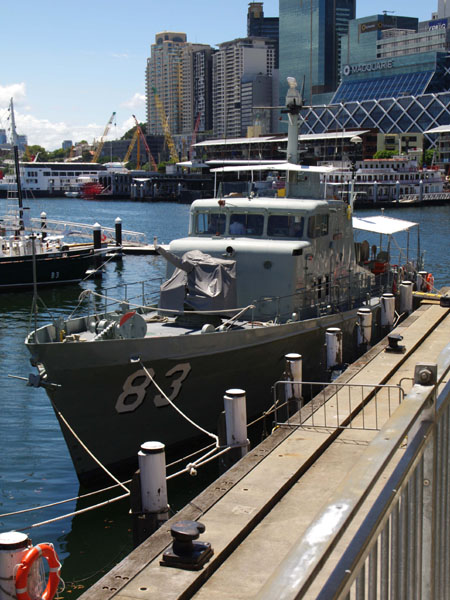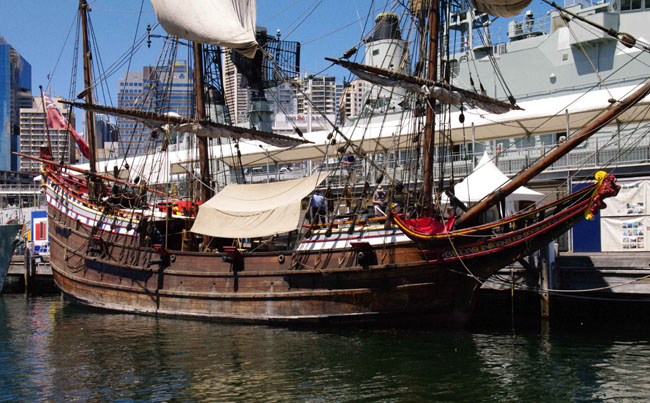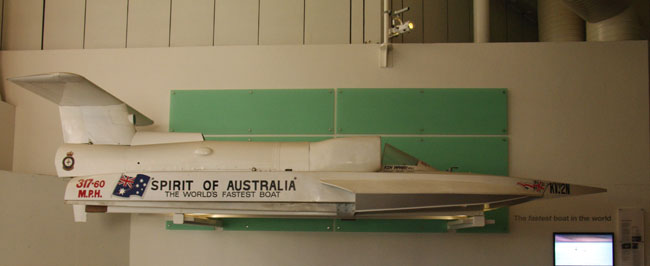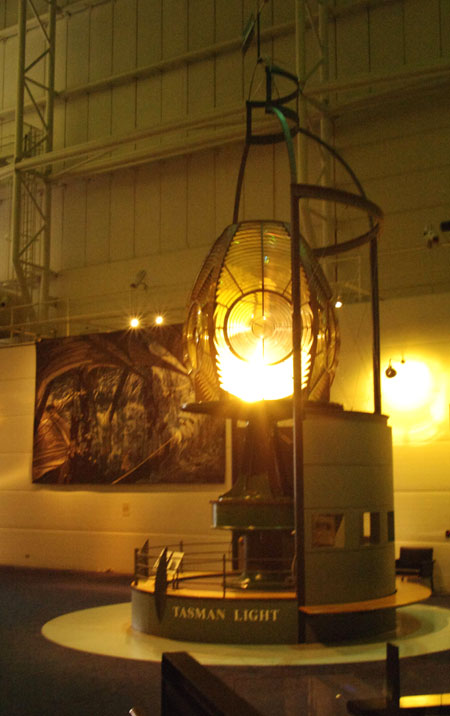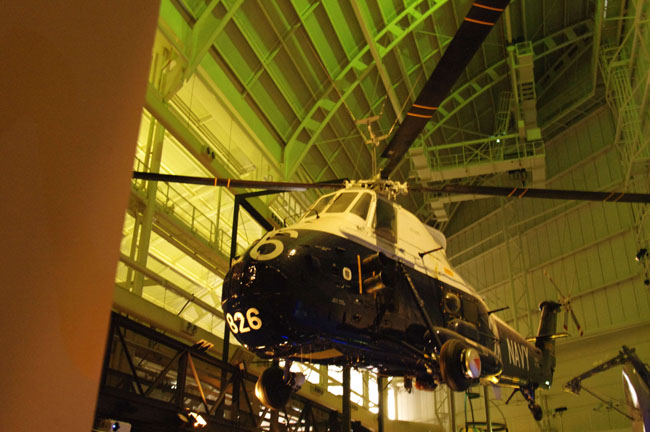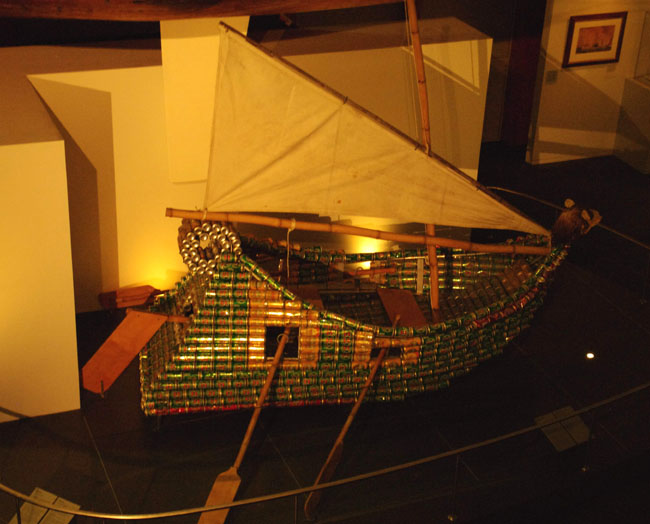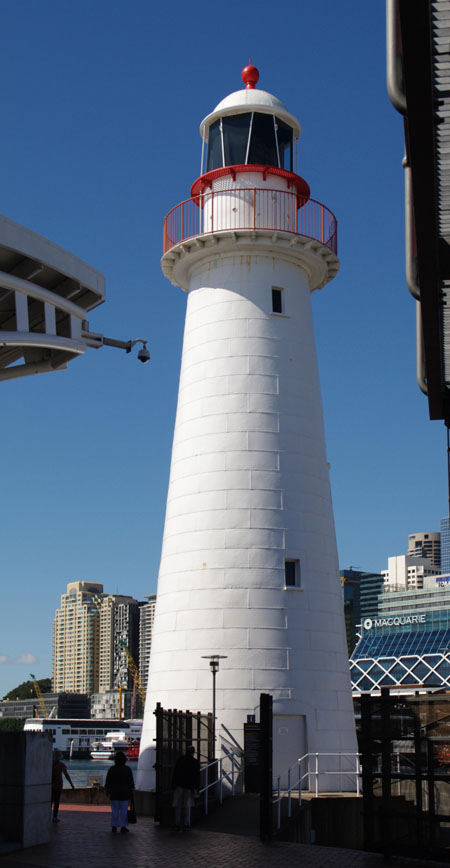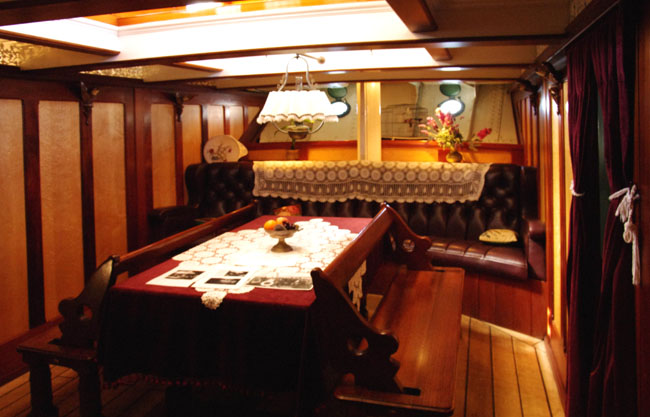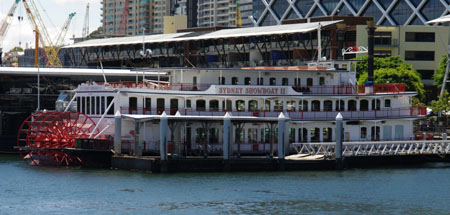|
|
|||||
 |
 |
|
Darling Harbour is home to the Australian National Maritime Museum which consists of a number of preserved ships plus a main building with a number of galleries. This photograph is a view of the museum building and the preserved ships taken from the observation deck of the Sydney Tower Eye. |
 |
|
|
|
The bridge, which opened in 1902, was closed to vehicular traffic in the 1980s and converted into a pedestrian bridge as part of the re-development of Darling Harbour. The monorail track was added and opened in 1988. As Prymont Bridge is a swing bridge the monorail track rests on a pivot so that the track can remain stationary while the bridge moves. As a result monorails can continue to cross even when the bridge is opened - pretty cunning. |
 |
|||||||
|
The bridge control room in all its Victorian cast iron splendour. It now also seems to function as a security office. Also the plaque to be found on the bridge |
|||||||
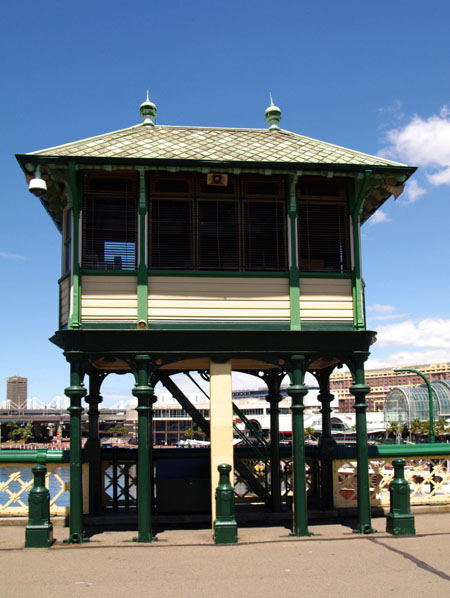 |
|||||||
 |
|||||||
|
A photograph showing the construction of the bridge, it consists of a steel truss swingspan (the curved section) with timber truss approach spans. Timber was used because of the high cost of iron and steel and government insistence on using local materials to reduce costs. |
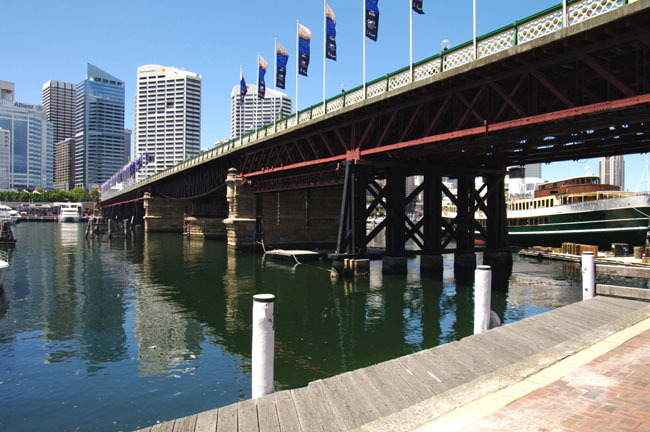 |
|
There are a number of ships preserved afloat in Darling Harbour including HMAS Vampire a Daring class destroyer (and Australia's largest museum vessel) and HMAS Onslow an Oberon class submarine. |
 |
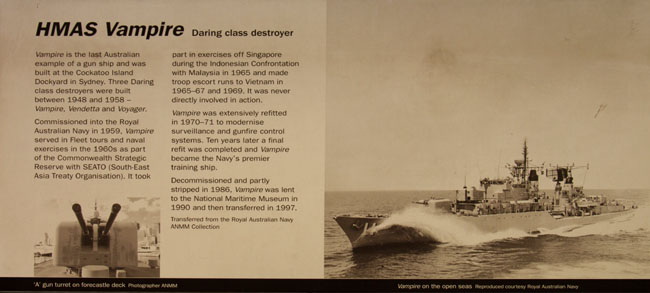 |
|
|
|
There are also a number of sailing ships including a replica of Captain Cook's famous ship of discovery HMB Endeavour (not present during my visit as it regularly sails to other locations) and a replica of the Dutch trading ship Duyfken. |
|
|
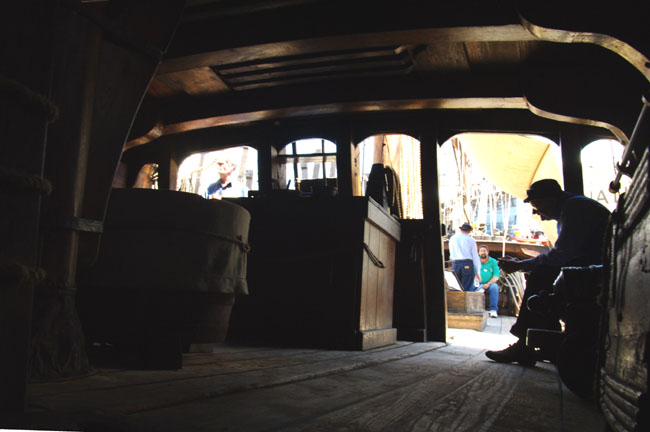 |
 |
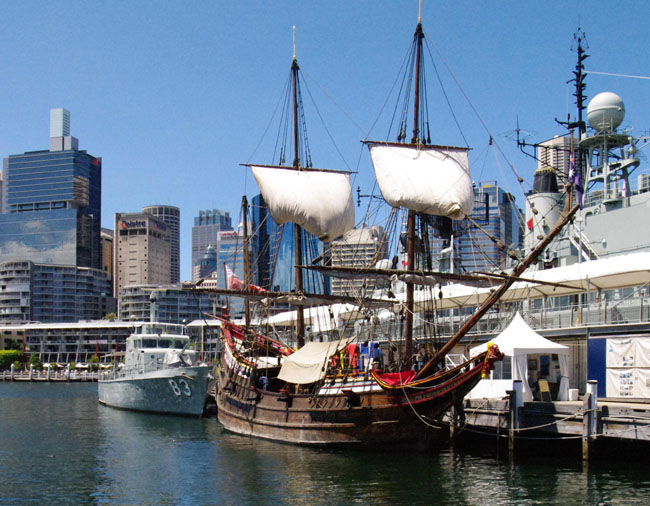 |
|
|
|
The main museum building is broken up into a number of galleries holding a variety of artefacts from complete ships to models. The following photographs are a small selection of what is on display. |
|
|
|
|
||||||||||||||||||||
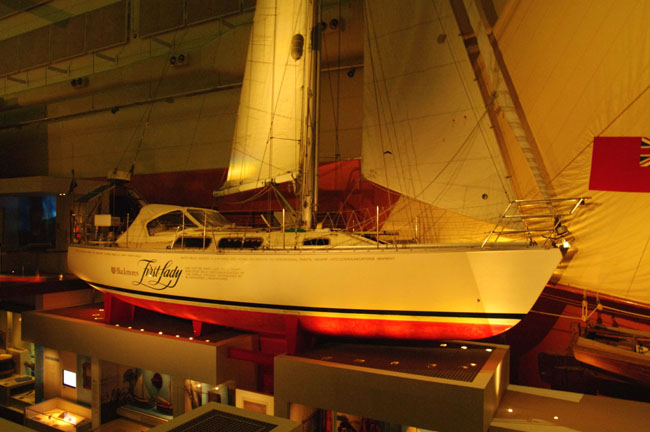 |
|
|
|
|
 |
|
|
|
Further along is the Barque James Craig, this is a true restoration and not a replica. Built in 1874 in Sunderland, England, by Bartram, Haswell, & Co., she was originally named Clan Macleod and was employed carrying cargo around the world. In 1900 she was acquired by Mr J J Craig, renamed James Craig in 1905, and began to operate between New Zealand and Australia until 1911. Abandoned floating in Tasmania's Recherche Bay she was sunk in 1932. She was rescued in 1972 as a rusting wreck and was originally intended as a static exhibit but was eventually restored as a sailing ship. In February 2001 she hoisted all of her 21 sails for the first time in nearly 80 years and sailed through Sydney Heads. |
 |
|
|
|
|
||||||||||||||||||||
|
Darling Harbour has been completely rebuilt over the years, this is the view across the harbour from the museum. |
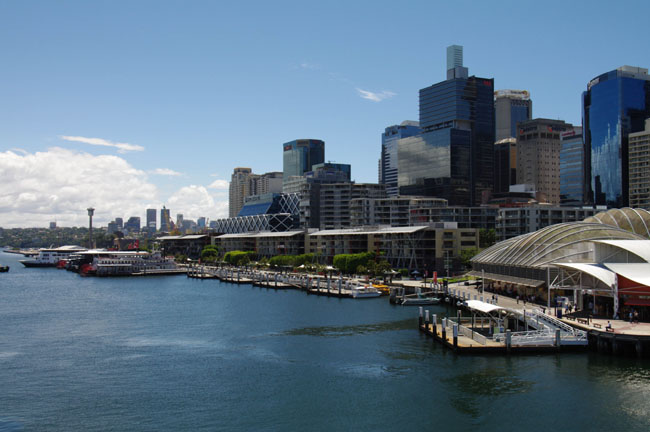 |
|
|
|
Go to the Sydney Tower Eye page |
|||
|
Go to top of page |
|||
| [New Wildwood] [Contents] [Route 66] [Western Odyssey] [South East USA] [Round the World] [Why Wildwood?] [Site Status and News] |

